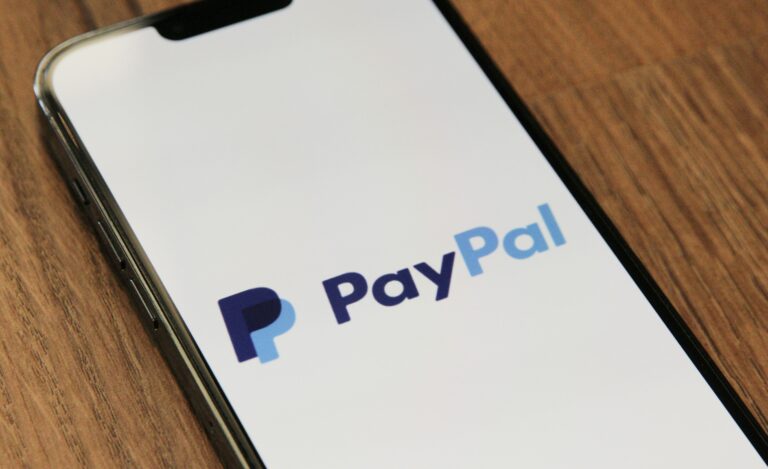Stripe is taking their next big financial leap. The move will effectively remove the need for a middleman and give them direct access to card networks.
What we’re talking about is Stripe’s application for a Merchant Acquirer Limited Purpose Bank charter in Georgia. This specialized banking charter grants Stripe direct access to payment card networks like Visa and Mastercard.
In essence, Stripe will be more like a payment processor.
ACCEPT THE CARD NETWORKS YOUR CUSTOMERS PREFER
What Is a Merchant Acquirer Limited Purpose Bank Charter, and Why Does Stripe Want It?
The Merchant Acquirer Limited Purpose Bank (MALPB) charter that Stripe applied for is a specialized banking pathway. This unique charter, available exclusively in Georgia since 2012, focuses narrowly on merchant acquiring activities. These activities include authorization, settlement, and clearing of payment transactions.
Unlike traditional banking charters, the MALPB doesn’t permit deposit-taking or lending services, making it a targeted tool for payment processors rather than a full banking transformation.
Direct Network Access
The most substantial benefit of the MALPB charter is that it grants Stripe direct membership with major card networks like Visa and Mastercard.
This direct access eliminates the need for sponsoring banks (known as BIN sponsors). These BINs serve as intermediaries when Stripe processes credit card transactions. By cutting out these middlemen, Stripe gains the ability to process, clear, and settle card transactions directly with the networks themselves.
This direct relationship with payment networks streamlines the transaction flow significantly. Currently, Stripe must route transactions through BIN sponsors before receiving approvals and releasing funds.
The charter would eliminate these additional steps, potentially enabling faster payouts and creating a more efficient payment infrastructure.
National Operating Capability Without Banking Dependencies
While the state of Georgia issues the MALPB charter, its benefits extend throughout the United States.
If approved, Stripe would gain the ability to process payments nationwide without relying on bank partners for network access. This nationwide processing capability comes with reduced risk of service disruptions that could occur if Stripe’s bank partners decided to exit the fintech sector.
The charter also positions Stripe to apply for a Federal Reserve master account, which would provide direct access to national payment systems like the Automated Clearing House (ACH).
Approval for such an account isn’t guaranteed. Custodia Bank’s ongoing legal battle after being denied despite holding Wyoming’s SPDI charter is a perfect demonstration. However, approval represents another potential avenue for Stripe to further reduce dependencies on traditional banking partners.
Exclusive Company
If approved, Stripe would join extremely select company. In the 13 years since Georgia introduced this specialized charter, only two other companies have received approval: Finaro (later acquired by Shift4 in 2023) and Fiserv, which received conditional approval in late 2024.
This exclusivity highlights both the charter’s specialized nature and the significant regulatory hurdles involved in obtaining it.
Stripe’s application was accepted on March 31, 2025, and Georgia’s Department of Banking and Finance will make a decision within 90 days. Stripe will likely learn the outcome by early July 2025.
However, even with state approval, Stripe would still need acceptance from Visa and Mastercard to fully operationalize the charter’s benefits, as these networks play a gatekeeping role similar to the Federal Reserve’s control of payment rails.
STAY COMPLIANT WITH DIRECTPAYNET
Wasn’t Stripe Already a Payment Processor?
No, Stripe was never a payment processor. Stripe is what’s known as a payment aggregator. In this role, Stripe divvies out sub-merchant accounts to anyone that applies for their service. Businesses operate underneath the Stripe business umbrella.
With the MALPB charter, the company can function more directly as a payment processor rather than merely as a payment facilitator.
This evolution mirrors the operational structure of its primary competitor, Square, which has long maintained a more vertically integrated approach to payment processing.
Direct Processing
With Stripe’s banking charter, it will gain the ability to process credit card transactions without relying on bank partners. Currently, Stripe must route all transactions through sponsoring banks before they reach card networks like Visa and Mastercard.
The charter eliminates this intermediary step, allowing Stripe to establish direct membership with these networks. This direct connection creates a streamlined payment flow that more closely resembles Square’s model, where the company maintains end-to-end control of the transaction process.
This structural change doesn’t just alter Stripe’s backend operations, it fundamentally transforms the company’s position in the payments ecosystem. Rather than functioning primarily as a technological layer atop traditional banking infrastructure, Stripe will now participate more directly in the financial plumbing of payment processing itself.
The company has emphasized that this move “complements the work we do directly with banking partners across the US”, suggesting that Stripe views this evolution as an expansion rather than a replacement of its current model.
Expansion into Card-Present Transactions
Stripe has already been making inroads into in-person payments through its Terminal product, but the MALPB charter significantly strengthens its position in this space.
Square has historically dominated the physical point-of-sale market with its iconic card readers and comprehensive POS systems. Stripe has primarily focused on online payments. This charter positions Stripe to more aggressively compete in Square’s territory.
Stripe Terminal already offers several hardware options, including the Reader S700, which functions as a full-featured card reader that can either pair with a mobile device or run as a standalone point-of-sale system.
The company has also introduced Tap to Pay functionality, allowing merchants to accept contactless payments directly on compatible iPhones and Android devices without additional hardware.
These offerings demonstrate Stripe’s growing commitment to in-person transactions.
Physical POS Ambitions
With direct network access through the MALPB charter, Stripe gains the flexibility to expand its hardware offerings and potentially develop more sophisticated POS solutions. The company’s existing hardware lineup includes mobile card readers with digital screens and PIN pads, as well as countertop card readers. However, Stripe still lags behind Square in terms of hardware variety and POS system sophistication.
Square offers a wider array of POS and KDS (Kitchen Display System) hardware options tailored to different business needs. Their ecosystem includes everything from simple mobile card readers to complete restaurant and retail management systems. With the charter in place, Stripe will likely accelerate development of more comprehensive POS solutions to compete directly with Square’s offerings.
The charter also positions Stripe to better serve omnichannel businesses—those operating both online and in physical locations. Stripe already promotes the ability to “manage online and in-person payments in one place for simplified reporting and a unified customer view”. The direct processing capabilities granted by the charter will enhance this unified commerce approach, allowing Stripe to offer more seamless integration between digital and physical sales channels.
GET PAYMENT PROCESSING THAT BACKS YOUR BUSINESS
How Will This Change Stripe’s Business Model and Your Rate?
The MALPB charter is an opportunity for Stripe to alter its cost structure, boosting profitability without necessarily changing merchant pricing. This creates operational efficiencies that directly impact Stripe’s bottom line.
Eliminating Intermediary Costs
By obtaining the Georgia MALPB charter, Stripe will eliminate the need for sponsoring banks when processing credit card transactions. These intermediaries currently serve as mandatory middlemen. With direct network membership, Stripe bypasses these sponsors entirely, cutting out substantial fees that previously ate into their margins.
While Stripe hasn’t disclosed specific figures, we can look to similar companies for context. Fiserv, which received approval for the same charter in late 2024, reported processing and services costs of $5.4 billion in 2023, representing approximately 32% of its $15.6 billion in transaction-processing related revenues.
While not all these costs relate to bank sponsorships, the figures illustrate the significant expense associated with payment processing infrastructure.
The charter also streamlines transaction flows by simplifying the steps involved in credit and debit card processing. Currently, Stripe must route transactions through BIN sponsors before receiving approvals and releasing funds. Direct relationships with payment networks eliminate these intermediary steps, potentially enabling faster payouts while reducing operational complexity and associated costs.
New Compliance Costs and Requirements
While the charter eliminates certain expenses, it introduces new regulatory and operational costs that Stripe must manage. These include:
- Regulatory fees: Stripe paid a $50,000 application fee upfront for the charter and will need to pay $15,000 annually in supervisory fees to Georgia regulators.
- Capital requirements: The charter mandates maintaining at least $3 million in statutory capital with a leverage capital ratio of 10%. Additional reserves may be required depending on payment volume and risk exposure, particularly for managing chargebacks.
- Operational overhead: Stripe must employ at least 50 Georgia residents and conduct rigorous background checks on key personnel. The company will also need to maintain detailed financial records, adding administrative complexity.
Despite these new costs, the savings from eliminating sponsor banks are expected to significantly outweigh the compliance expenses. This mirrors Fiserv’s experience with its MALPB charter, where the company has successfully leveraged the charter to reduce costs while managing regulatory expenses effectively.
Merchant Pricing Strategy
Despite the substantial cost savings, Stripe is unlikely to significantly reduce transaction rates for merchants. Several factors contribute to this pricing strategy.
First, Stripe already operates in a highly competitive market with established pricing structures. Dramatically undercutting current rates could trigger price wars that might ultimately harm the industry’s profitability.
Second, maintaining current pricing while reducing costs creates a substantial opportunity to improve profit margins. This additional profitability can fund continued innovation, expansion into new markets, and development of new products and services.
Third, Stripe may choose to compete on value rather than price. The direct network relationships could enable faster payouts and improved transaction reliability at the current price point.
Finally, while Stripe could offer modest pricing benefits to merchants in highly competitive segments, these would likely be targeted rather than across-the-board reductions.
The company has emphasized that this charter “helps us ensure we have an even broader range of options to support our users,” suggesting a focus on capability expansion rather than price disruption.









